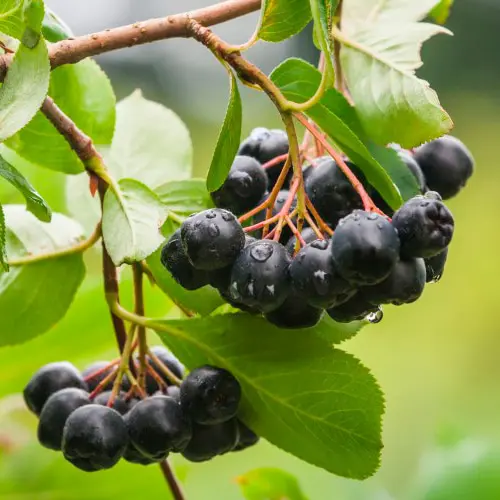Maqui berry (Aristotelia chilensis), a lovely deep purple berry, comes to us from one of the cleanest environments on earth, the Patagonian region of South America. Despite the harsh climate, this super-berry has thrived there for centuries.
Maqui has long been a dietary staple of the indigenous Mapuche Indians of Central and Southern Chile, who used it medicinally to treat a full range of ailments. In the harsh winters, consuming the berries helped their bodies generate warmth! The name ‘maqui’ means benevolence and peaceful intention and the plant is sacred to the Mapuche, who use it to this day in ceremonies and celebratory events. Interestingly, it just so happens that the Mapuche Indians are the only Indian group on the entire continent who were never conquered, despite the best and most strenuous efforts, first by the Inca, and then later by the Spaniards. Because the Mapuche prevailed over the Spanish throughout 300 years of attempted conquest, their strength and stamina took on mythological power.

The source of this power was said to have been the fermented maqui berry juice the Mapuche drank several times a day.
The Mapuche traditionally used the berries to treat such things as tumors, fevers, sore throat, ulcers, and the plant’s leaves to address problems associated with diabetes and inflammation. The deep purple pigment of the maqui berry is the source of its extremely high content of anthocyanins called delphinidins. Delphinidins have shown strong anti-inflammatory characteristics , as well as the ability to inhibit the growth of colon cancer cells. Maqui berries have been shown to reduce COX-2 enzymes, which are responsible for pain associated with inflammation. Drugs made to reduce this sort of debilitating pain have mostly been taken off the market due to disastrous side effects (heart attack, strokes), and maqui berries are an outstanding natural solution, with no ill side effects.
In a study that used a variety of cancer cells it was suggested that anthocyanins “activate detoxifying enzymes, prevent cancer cell proliferation, induce cancer cell death…” and can “inhibit the formation of new blood vessels that encourage tumor growth” (What Are Anthocyanins?, Billy Galipeault, https://us.myprotein.com/thezone/supplements/what-are-anthocyanin-benefits/ )
Another study concludes that “dietary interventions with maqui berry extract may improve oxidative status (Ox-LDL and F2-isoprostanes) in healthy adults, overweight adults, and adult smokers.” ( US National Library of Medicine, National Institutes of Health, https://www.ncbi.nlm.nih.gov/pubmed/26400431)
Dried maqui berries are too hard to eat as-is, so the most typical usage is in a dried and powdered form that we can add to smoothies, juices and even infuse into tea. It doesn’t take much to add a tremendous nutritional boost to your beverage!
More Information
Sources:
Journal of Berry Research; Carolina Fredes and Paz Robert
https://content.iospress.com/download/journal-of
-berry-research/jbr082?id=journal-of-berry-research%2Fjbr082
The intake of maqui (Aristotelia chilensis) berry extract normalizes H2O2 and IL-6
concentrations in exhaled breath condensate from healthy smokers – an explorative study
https://www.ncbi.nlm.nih.gov/pmc/articles/PMC4369103/
The Many Health Benefits of Anthocyanins
http://www.donnieyance.com/the-many
-health-benefits-of-anthocyanins/
Studies of a standardized extract of Maqui fruit rich in delphinidins in the
maintenance of glucose balance
https://www.researchgate.net/publication/307930472_Studies_of
_a_standardized_extract_of_Maqui_fruit_rich_in_delphinidins
_in_the_maintenance_of_glucose_balance

